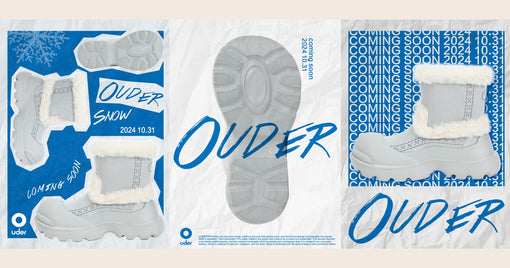
- Article published at:
- Article author: Finn Tyan
- Article tag: Brand & Product
Drawer menu
Your Sand Dune Clogs from Ouderare more than just a fashion statement—they’re a commitment to style, comfort, and sustainability.
To ensure they last through multiple seasons, a little care goes a long way.
Here’s how to maintain the pristine look and durability of your Ouder clogs, so they continue to elevate your outfits for years to come.

Keeping your Sand Dune Clogs clean is essential to maintaining their fresh look. Eco-friendly components used in Ouder clog designs include cork and leather that are acquired ethically; these materials require mild maintenance.
Leather uppers: Wipe with a damp cloth dipped in a little amount of soap solution. Avoid too much moisture since this might reduce the material's life. Gently buff afterward to maintain their shine.
Cork soles: For the durable cork Ouder uses, clean with a damp cloth and apply a natural oil like coconut oil to keep the material nourished and crack-free.

Ouder's clogs are designed for durability, but adding an extra layer of protection never hurts. Use a waterproofing spray to shield your clogs from moisture and stains. This helps preserve the earthy, minimal design Ouder is known for, without compromising the integrity of the natural materials.
Proper storage is key to extending the life of your clogs:
Avoid direct sunlight: Sun exposure can cause fading, especially to Ouder’s carefully curated natural tones.
Preserve shape: To keep your clogs looking as elegant as the day you purchased them, stuff them with tissue paper or use a shoe tree.

Ouder’s focus on comfort means their Sand Dune Clogs come with supportive insoles, but even the best insoles need refreshing:
Naturally deodorize: To absorb any moisture and neutralize smells, place some baking soda into your clogs and let them there overnight.
The Sand Dune Clogs are distinguished by Ouder's renowned cork soles, which provide longevity and sustainability. Since cork can dry out over time, keeping the soles flexible and free of cracks can be ensured by using a cork sealer or a little amount of natural oil.
Little dents are inevitable, but they don't have to take away from how great your clogs look:
Leather touch-ups: Use a leather conditioner or polish to smooth out any scratches on the uppers made of leather. Even though Ouder's superior leather is meant to last, with a little TLC, they might still look like new.
Cork repairs: Gently sand down any scratches on the cork soles, then reapply a natural oil to keep the material looking pristine.

If your Ouder clogs become wet, don't worry, because the whole shoe is made of waterproof material, but if you are worried that water marks will leave water marks on your shoes after they dry naturally, just wipe them dry with a paper towel.
By following these simple care steps, your Ouder Sand Dune Clogs will stay looking new season after season. Ouder's clogs are made to last because of their strong emphasis on craftsmanship and sustainability, but with a little upkeep, you can make sure they become a wardrobe mainstay for many years to come. You can always go out in elegance thanks to your well-maintained clogs, whether you're relaxing at a café by the sea or taking a trip around the city.

1.How do you clean clogs?
Using a moist towel, wipe them down. Use a delicate brush and light detergent on leather, and a moderate soap solution on cloth. Avoid soaking the clogs.
2.Can clogs be washed in a washing machine?
Machine washing is not recommended for most clogs, particularly those made of leather or wood. Hand cleaning is recommended.
3.How do you make clogs last longer?
Their lifespan can be increased by routine cleaning, the use of protective sprays, avoiding too much water or direct sunshine, and other measures.